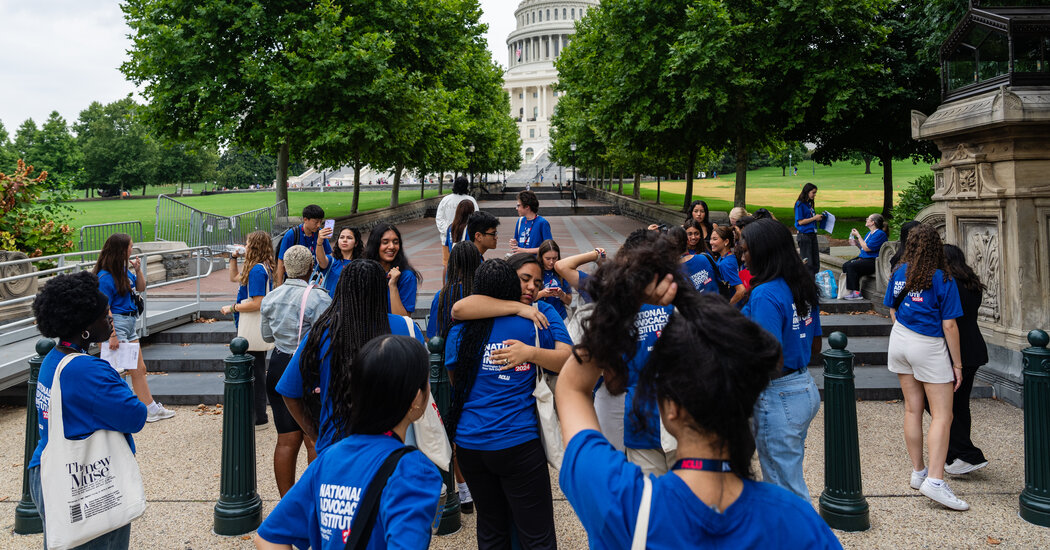The Senate was set to pass the Kids Online Safety Act on Tuesday, but the legislation faces an uphill battle in the House because of censorship concerns.
Last week, the American Civil Liberties Union sent 300 high school students to Capitol Hill to lobby against the Kids Online Safety Act, a bill meant to protect children online.
The teenagers told the staffs of 85 lawmakers that the legislation could censor important conversations, particularly among marginalized groups like L.G.B.T.Q. communities.
“We live on the internet, and we are afraid that important information we’ve accessed all our lives will no longer be available,” said Anjali Verma, a 17-year-old rising high school senior from Bucks County, Pa., who was part of the student lobbying campaign. “Regardless of your political perspective, this looks like a censorship bill.”
The effort was one of many escalations in recent months by those who oppose the bill. In June, a progressive nonprofit, Fight for the Future, organized students to write hundreds of letters to urge lawmakers to scrap it. Conservative groups like Patriot Voices, founded by the former Republican senator Rick Santorum of Pennsylvania, are also protesting with an online petition.
What was supposed to be a simple piece of legislation to protect children online has been dragged into a heated political war. At the heart of the battle are concerns about how the bill could affect free speech on culturally divisive issues, which both sides of the spectrum worry could be weaponized under the guise of child safety. Liberals worry about censorship of transgender care, while conservatives are concerned about the same with anti-abortion efforts. The tech industry has also latched onto the same First Amendment arguments to oppose the bill.
The controversy stems from the specific terms of the Kids Online Safety Act, or KOSA. The legislation would require social media platforms and other sites to limit features that can heighten cyberbullying, harassment and the glorification of self-harm. The bill would also require tech companies to turn on the highest privacy and safety settings for users under 17 and let them opt out of some features that have been shown to lead to compulsive use.
